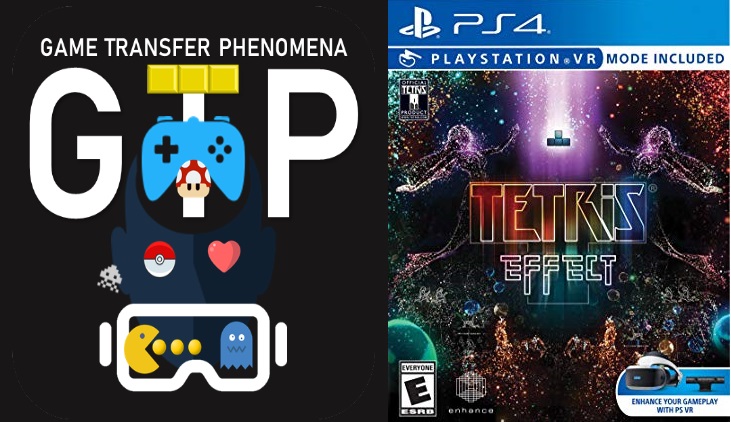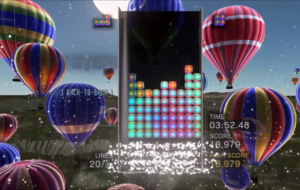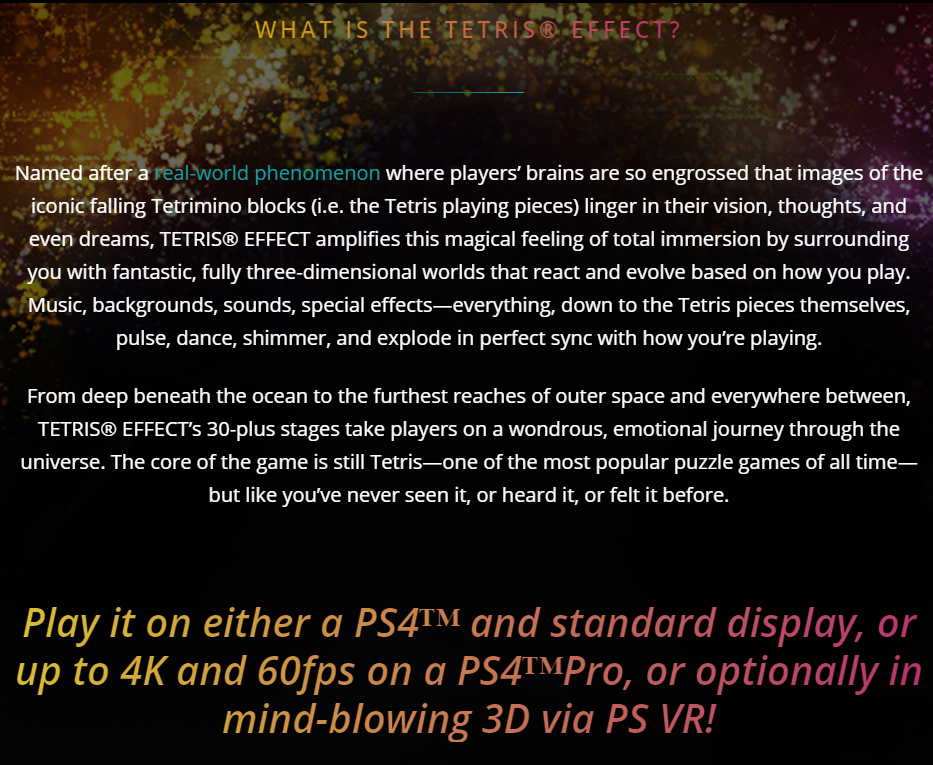
Bright and fast-moving particles of colours that appear and disappear with booming sounds like fireworks easily captivate our senses.
Video game playing does not only enhance our senses and cognition while playing but also after playing. When closing our eyes, at every blink of the eyes or even with open eyes, colours, textures, pixelations, hyperactive or still images arise. Aural and other sensations do not escape the mind; music, sounds, voices, kinaesthetic and tactile sensations come back to us, at least temporary. Slips of the tongue intrude conversations, spontaneous movements of limbs, and behaviours sneak into everyday routines. These are “echoes of video game playing”, which I have called in my research Game Transfer Phenomena (GTP).
Some have referred to GTP as "consensus hallucinations" and "the original AR". These phenomena are fascinating but not mystical, and are not exclusive to video game playing! Although, playing video games involve a compound of factors that may ease the occurrence of these phenomena: prolonged exposure to sensory stimuli, trance states - dissociations (losing track of time, immersion, sense of presence), engaging in high cognitive load processes and emotional engagement1.
One of the main goals with my research on GTP, beyond the scientific exhilaration, has been to explain and inform about GTP, to avoid that GTP is being interpreted as a sign of psychopathology by gamers or others. From time to time GTP has both in factual and real cases received a “diagnostic” label. The hope is to destigmatize hallucinatory phenomena, improve our understanding of these phenomena, and help those who actually suffer from them.
I understand seeing images with closed/open eyes with game content as pseudo-hallucinations, images with perceptual properties manifest as visual sensation where there is no loss of sense of reality. Although in my research, I have found that for some gamers seeing images and hearing sounds can lead to short moments of dissociation where they feel as if they are still in the game, and some have even interacted with the images. Seeing images from video games not only arise under hypnagogic states but in awake states, sometimes triggered by game-related cues.
What is GTP telling us about the human mind? Can we use GTP to our advantage? What challenges does GTP pose?
The recently launched Tetris Effect game touched the heart of my area of research expertise, GTP, so I needed to stop and reflect!

The astonishing game Tetris Effect is a new “incarnation” of the famous game Tetris. The name Tetris Effect is inspired by re-experiencing images and thoughts from the game after playing. The origin of the term “Tetris Effect” is a bit uncertain, but it is documented back in 1994.2
I’m excited because the video game industry is openly paying attention to a “real-world phenomenon where players’ brains are so engrossed that images of the iconic falling Tetrimino blocks (i.e. the Tetris playing pieces) linger in their vision, thoughts, and even dreams..." as the Tetris Effect website states. I am strongly passionate about this phenomenon and have dedicated the most of my waking hours over the last seven years trying to understand it, moving from one country to another to get support for my capricious, but (I believe) indispensable research! At the same time, the latest events have made me reflect on the possible further implications.

Is the marketing campaign of Tetris Effect one of the first steps toward the acknowledgment that video games are capable to produce hallucinatory-like phenomena after the exposure? As VR devices and mixed-reality technologies are affordable by more consumers, this may be the future state of mind.
Just the simple Augmented Reality technology used in Pokémon Go in one of my studies shows that 15% of the gamers had the sensation that a Pokémon was physically present, and another 16% had found themselves looking for Pokémon outside the screen while playing (N=1,313).8
Trailer of the game:
<iframe title="Tetris Effect - E3 2018 Announce Trailer | PS4" src="//www.youtube.com/embed/Mr8fVT_Ds4Q?enablejsapi=1&origin=https%3A%2F%2Fwww.gamedeveloper.com" height="360px" width="100%" data-testid="iframe" loading="lazy" scrolling="auto" class="optanon-category-C0004 ot-vscat-C0004 " data-gtm-yt-inspected-91172384_163="true" id="312514527" data-gtm-yt-inspected-91172384_165="true" data-gtm-yt-inspected-113="true"></iframe>Documentary about the game that complemented the launch:
<iframe title="Tetris Effect | "Mental Blocks" Mini-Documentary | PS4" src="//www.youtube.com/embed/y5QSQ75PWuw?rel=0&enablejsapi=1&origin=https%3A%2F%2Fwww.gamedeveloper.com" height="360px" width="100%" data-testid="iframe" loading="lazy" scrolling="auto" data-gtm-yt-inspected-91172384_163="true" id="425522555" class="optanon-category-C0004 ot-vscat-C0004 " data-gtm-yt-inspected-91172384_165="true" data-gtm-yt-inspected-113="true"></iframe>The enhancement and the alteration of the human senses is nothing new, and the technological realm has not escaped the trends to alter our state of consciousness. To me, this seems like a turn in history, a push toward a positive acceptance of hallucinations. Hallucinations were initially considered of cultural significance, but in the eighteenth century they acquired a medical etiquette and were connotated as pathological.
Here are some examples of how hallucinatory phenomena and the word "hallucinations", a previously hushed word are starting to enter the technological realm:
Applications developed to alter our perception. These applications/software have been around for a while, like those that induce optical illusions, synaesthesia, e.g., SoundSelf and binaural beats that modify states of consciousness and mood, e.g. i-doser.
Expectations for 2027: Mar Gonzalez Franco, a researcher at Microsoft predicted “by 2027 we will have ubiquitous virtual reality systems that will provide such rich multisensorial experiences that will be capable of producing hallucinations which blend or alter perceived reality. Using this technology, humans will retrain, recalibrate and improve their perceptual systems. In contrast to current virtual reality systems that only stimulate visual and auditory senses, in the future, the experience will expand to other sensory modalities including tactile with haptic devices.”3
The video game Hellblade portrays a female warrior that struggles with symptoms of psychosis (hallucinations and delusions). The Hellblade team was even awarded “psychiatric communicator of the year”.
Projects on special sensory effects, such as “Programmable Synthetic Hallucinations” led by Dan Novy as part of his PhD at the MIT, which “will allow hallucinatory phenomena to be programmed and utilized for information display and narrative storytelling” (During my recent visit to Boston, I was curious to find out more. Unfortunately, I couldn’t make it to the teatime that Dan kindly invited me to. I hope we can catch up in the future).
Some relevant findings on GTP, at this point:
GTP is common among gamers of a variety of games, even gamers of Pokémon Go have reported it. 81-97% of gamers have experienced at least one instance of GTP (N>6,000; 15-60 years old)5-8.
Some of the most common forms of GTP are visualizing/seeing images with closed eyes (74-77%) and hearing background music (71-74%). 5-6
Seeing images with open eyes has been reported by 29-31%. 5-6
Some gamers reported seeing images everywhere, sometimes for days 13.
In most of the cases, GTP is experienced while doing everyday chores and is in many cases triggered by game-related cues 5.
GTP has also been reported while trying to fall asleep 5 and under hypnagogic states documented in experimental studies (hypnagogic hallucinations are one of the most common types of hallucinations among the non-clinical population14.)
Recalling dreams and dreaming about video games are strongly connected with GTP. 9
According to a study with over 2,000 participants, most gamers do not report negative consequences and GTP is more likely to be experienced as pleasurable than unpleasurable. One in five wants that GTP happens again 5.



































